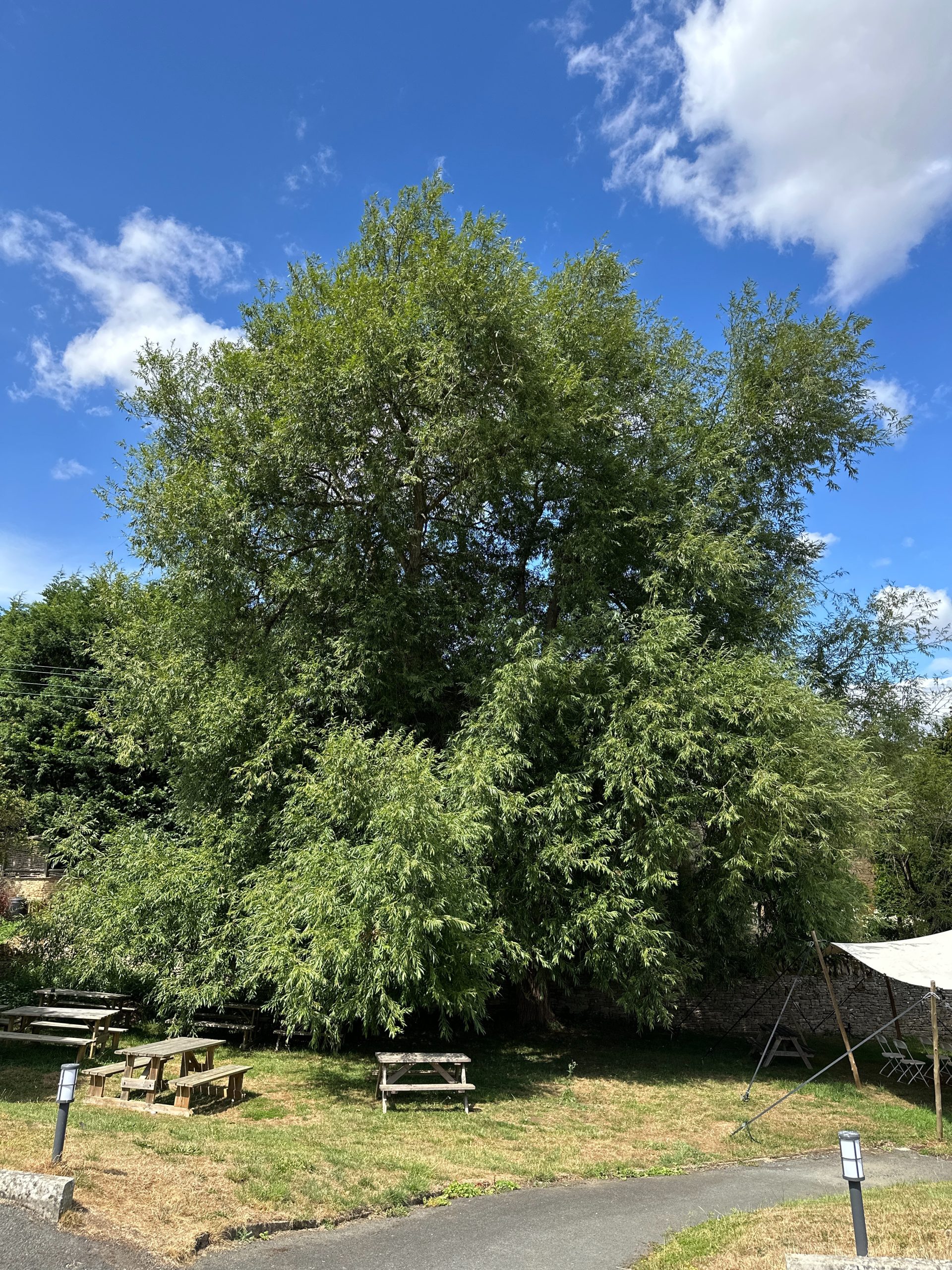
23 Sep Crack Willow
Crack Willow (Salix fragilis)
Our tree this month is one of the UKs scruffier species – Salix fragilis, known as the ‘crack’ willow. It gets this name from the distinctive sound of its branches breaking, and from the fact that it is such a fast growing tree that its trunk often splits under its own weight. Often found growing alongside rivers, lakes and other water courses, this brittle tree is traditionally pollarded, but where this has fallen out of practice you will often find an array of broken limbs within its crown. Despite its potential for causing blockages in these water systems, the crack willow also stabilises riverbanks due to its rapid growth and extensive root system.
In Biblical times all willows were trees of celebration, and in some northern areas willow branches are used instead of palms to celebrate Palm Sunday. They were also linked with witchcraft and magic, and their pliable branches were commonly used for making wands and divining rods. Its wood is relatively weak and prone to splitting, but the flexible branches of the pollarded crack willow can be woven into various shapes and structures, and are traditionally used in basketry and other similar crafts.
These days however, the trees are associated more with sadness and mourning, and you may find them planted in cemeteries as a symbol of grief and the transient nature of life.
Appearance and Identification
Salix fragilis is a medium to large deciduous tree that can grow up to 25 meters in height. Its bark is rough and greyish-brown, developing deep fissures with age – pollards can become contorted and gnarled, with lots of crevices. The tree’s branches are smooth, brittle, and tend to break off easily.
The leaves of the crack willow are lanceolate to ovate-lanceolate, measuring between 7 to 15cm in length. They are serrated, dark green on the upper side, and lighter green beneath, often with a silky texture. In spring, the crack willow produces catkins—slender, cylindrical flower clusters that can range from 3 to 6cm long. These catkins are dioecious, meaning individual trees are either male or female.Propagation and Control
Crack willows thrive in moist environments and in full sunlight. They are well-adapted to waterlogged soils and can tolerate flooding, making them a common sight in riparian zones across Europe and Asia. Broken twigs and branches which get carried downstream can readily take root, allowing them to colonise new areas. As the species also spreads via root suckers, pure groves can develop.
Like other willows, crack willow is susceptible to watermark disease caused by the bacteria Brenneria salicis. Over time, this leads to affected branches dying back and red leaves developing in the crown. If left untreated this can cause the tree to die.
Source and Reference Materials
Information detailed in this post has been obtained from the author’s own knowledge and photographic library where possible. Additional source of information and photographs include:
Van den Berk, B.V. (2004). Van den Berk on Trees. Van den Berk Nurseries.



